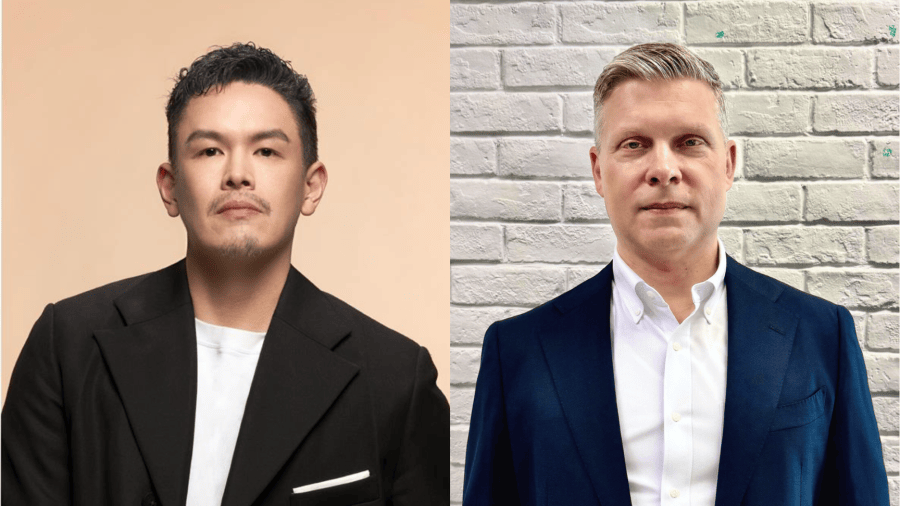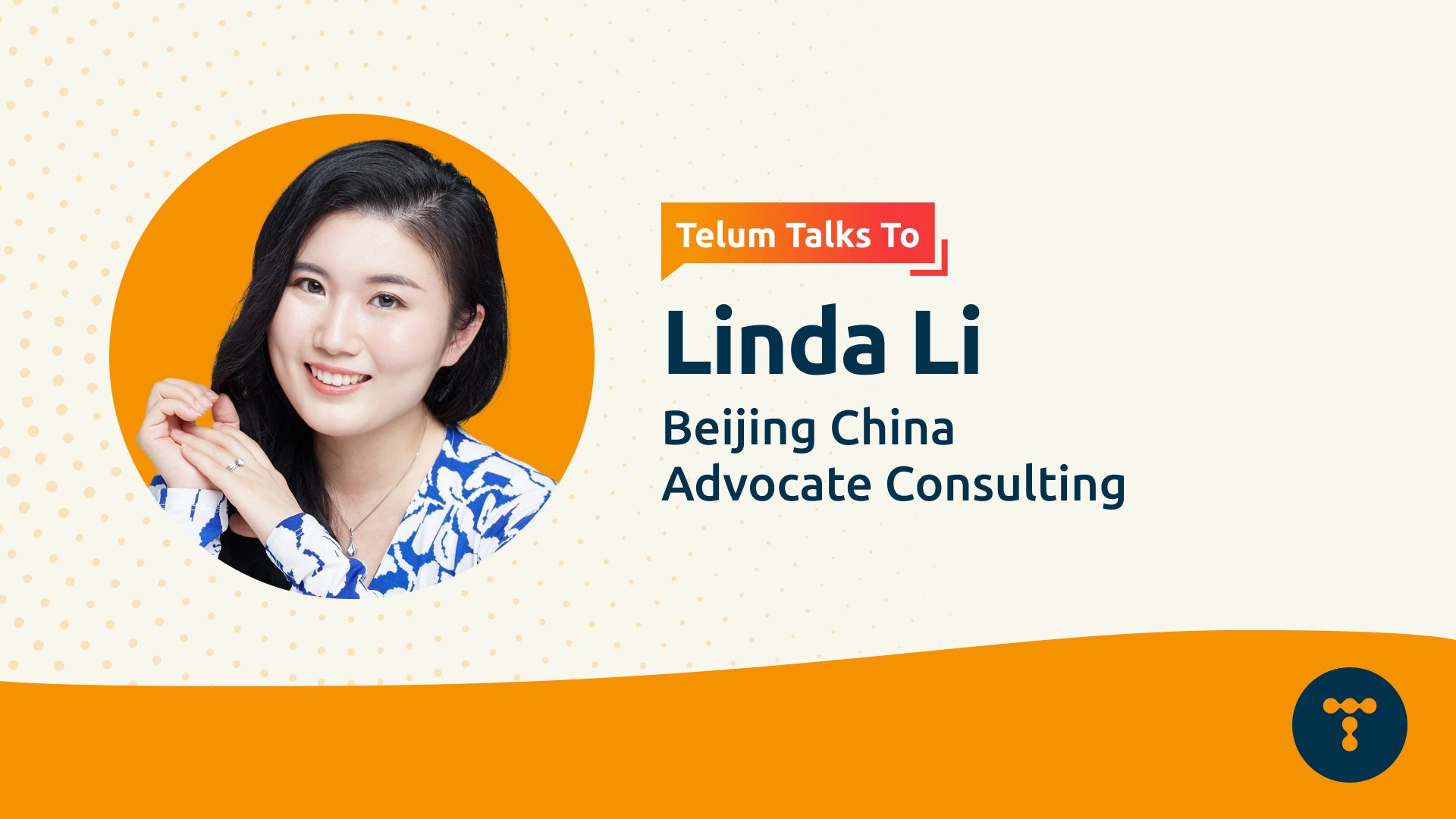Weber Shandwick has announced a series of leadership and capability updates for the Chinese and Asia Pacific markets.
Corbin Hsieh (pictured left) has been appointed Head of Weber Create and Consumer Practice, APAC. He leads the expansion of Weber Create, an earned-first creative and integrated media offering that brings together influence and culture. Based in Shanghai, Corbin is to partner closely with market leaders across the region to scale creative capabilities and support client growth. Prior to this, he served as Weber Shandwick's Managing Director, China.
Commenting on his new post, Corbin said, "My passion lies in the consumer side of business, where creativity and cultural understanding drive impactful work. I am thrilled about this role and eager to expand our earned-first creative and integrated media across APAC. Our goal is to connect culture, influence, and creativity to help brands succeed in a fast-changing world."
With Corbin's appointment, Robert Magyar (pictured right) has stepped up as Acting Managing Director, China, while continuing in his role as Executive Vice President, Head of Healthcare, APAC. In this dual role, he oversees Weber Shandwick's business and client growth across the market.
"China is one of the most dynamic markets in the world, where reputation and stakeholder engagement are more important than ever," Robert said. "I am excited to build on our strong foundation here and continue supporting clients with the strategic solutions they need to succeed."
Based in Beijing, Robert brings over 20 years of business leadership experience. He has led and managed business units and advised senior executives and industry leaders across the Chinese, Indonesian, Japanese, Swiss, and American markets. Since rejoining Weber Shandwick in 2024, he has expanded its healthcare practice into one of the firm’s strongest growth pillars.
Weber Shandwick has also announced the integration of Bridge Beijing to consolidate its public policy and advisory services. Founded in 2016, Bridge Beijing is a boutique strategic comms agency for international organisations engaging with the Chinese market. The firm's portfolio includes global health organisations, philanthropic foundations, and NGOs, including a long-term partnership with the Gates Foundation.
Tyler Kim, CEO, APAC of Weber Shandwick, remarked, “These strategic leadership appointments, along with the integration of Bridge Beijing, represent a significant milestone in advancing our capabilities and deepening our commitment in China. By combining proven local expertise with the strength of our global creative network, we are uniquely positioned to deliver innovative, high-impact solutions for our clients as they navigate an increasingly dynamic market landscape."

APAC leadership and capability updates at Weber Shandwick
Telum Media creating connections
Get in touch to learn more
Liquid Ideas announces new hire, office, and clients
You might also enjoy
Independent creative agency, Liquid Ideas, has welcomed Bella Rousis to its team as Head of Strategy. Her remit includes overseeing all new business and client strategy.
Bella joined from History Will Be Kind and has over 13 years' experience working at the intersection of brand and creative across a range of sectors.
The appointment follows a raft of new client wins for the agency, including:
- Spirits Victoria Association has appointed Liquid as its agency of record, following a competitive pitch. The two-year remit focuses on local industry engagement, branding, website and asset development, social media support and campaign work.
- Good Food & Wine Show has tapped the agency to manage its national tour's earned media and influencer engagement.
- Better Beer has engaged Liquid to lead on its earned PR activity.
- The agency has been re-engaged to manage media relations and sampling for Mumm Terroirs next phase under Pernod Ricard across Australia and New Zealand.
Liquid Ideas are also gearing up for the launch of a Melbourne office early 2026, which will be led by Account Director, Herper Sassaman, who joined earlier this year, as reported by Telum.
Liquid Ideas' Managing Director, Cleo Posa, said: "It’s been a big year at Liquid and this run of new work really speaks to the current breadth of what we do - from shaping an entire category with Spirits Victoria, to supporting major Aussie festivals, and new launches for long-term partners like Suntory Global Spirits, Pernod Ricard and Merivale. The addition of Bella and a Melbourne office puts us in great stead for an epic run up to 2026."
James Larsson has been welcomed at Queensland Hydro as Head of Government Relations and Communications. He was previously Director Government and Stakeholder Relations at Carnival Corporation for two and a half years. Prior to this, James held multiple roles as a media adviser within the Australian Government, and has experience in the sporting sector and agency-side.
Amid a shifting global economy, the China International Import Expo (CIIE) continues to attract businesses from around the world looking to increase their footprint in the world’s second-largest economy.
Now in its eighth edition, the import-themed trade fair is set to take place from 5th to 10th November this year. Since its launch in 2018, the event has served as a platform for foreign companies to understand trends in China’s domestic market and explore opportunities amid shifting consumer demand.
Linda Li, Co-founder & DGM from Beijing China Advocate Consulting, shared with Telum Media her insights on the PR value of CIIE participation, how to stand out in a crowded media landscape, and communications advice for first-time exhibitors.
What can brands do to strategically leverage CIIE to enhance reputation, strengthen credibility, and shape long-term awareness in the Chinese market?
CIIE has evolved into a pivotal platform for global collaboration, offering significant value for brand reputation in today’s dynamic marketplace. Beyond a traditional trade exhibition, CIIE provides a unique opportunity for foreign enterprises to demonstrate their adaptability to the Chinese market and their ability to operationalise innovations locally.
This year’s expanded participation, featuring over 50 countries and 170 enterprises returning for the eighth consecutive year, creates a robust business ecosystem. The presence of high-level government delegations and local government representatives at CIIE further enhances the exposure of participating companies to key industry stakeholders and government officials. This increased visibility is crucial for building long-term relationships and strategic partnerships, rather than just facilitating trade.
Moreover, special exhibition zones, including sustainable technologies, intelligent manufacturing, and the medical sector, attract targeted media and stakeholder attention, making CIIE a powerful platform for both B2B and B2C engagement.
CIIE provides great opportunities to connect with the media. How can companies make the most of their media relations strategy at CIIE, and what types of narratives tend to resonate with the media?
A successful CIIE media strategy rests on three pillars: strategic timing, thematic relevance, and accessible storytelling. Given the intense competition for attention, it is crucial to start planning at least 10 –12 weeks before the event, aligning with key milestones such as official countdowns, highlights previews, and the opening ceremony. The most critical period is the two weeks leading up to and during CIIE.
As always, this year’s media coverage is expected to be driven by narratives that align with the government's macro agenda and industry focal points, such as high-quality development, high-level openness, sustainable development, AI applications, and silver economy.
For example, a company might highlight how its green technology supports decarbonisation goals, or how its AI tools enhance global efficiency.
Engaging with state-owned media, which are the core force in CIIE media coverage, is essential. Additionally, leveraging new media channels, including the state-owned media's digital platforms, as well as influencer and blogger visits, can significantly increase reach.
One of our clients' offerings became a trending topic on Douyin following a short video report by a state-owned media on its Douyin channel. This requires meticulous preparation, encompassing a variety of promotional content from written pieces and images to video clips, and ensuring an interactive and visually appealing booth design to encourage social sharing and media interest.
How have evolving trade dynamics affected the CIIE and your clients’ comms strategy this year?
The evolving trade dynamics in 2025 have underscored CIIE’s role as a stable platform for international business collaboration. For many exhibitors, the Chinese market is now both a launch pad for regional growth and a collaborative hub for innovation. This has prompted communications teams to focus on how their participation strengthens supply chain resilience, accelerates technology exchange, and supports sustainable development - rather than simply announcing product availability.
For example, a leading consumer company can use CIIE to announce its expanded R&D or manufacturing investments in Mainland China, demonstrating its commitment to the market.
Similarly, a pharmaceutical company can highlight its collaboration with local partners, highlighting how CIIE facilitates industry cooperation and the development of innovation ecosystems. By focusing on solutions and long-term value, brands can turn complex trade discussions into compelling, media-friendly narratives, positioning themselves as proactive contributors to the evolving global Chinese business ecosystem.
Lastly, what comms advice would you give first-time exhibitors participating in CIIE?
For first-time exhibitors, CIIE should be seen as a strategic communications platform, not just an exhibition. Start by aligning your core message with CIIE’s key themes, such as sustainability, digital innovation, and inclusive trade. Utilise official New Product Launch events to gain additional visibility.
Given the intense competition for media attention, it’s also important to craft media materials prudently, especially those submitted to the organisers, as these are circulated to major outlets, which potentially leads to significant coverage.
Thoughtful and clear content can help attract attention from prominent state-owned media. Focus on a few standout features rather than trying to gain coverage on everything. Highlight your unique and relevant offerings, and present them through multiple channels and dimensions.
Aligning these highlights with current industry and societal buzz topics, such as weight management or robotics, can boost your chances of breaking through the noise.


